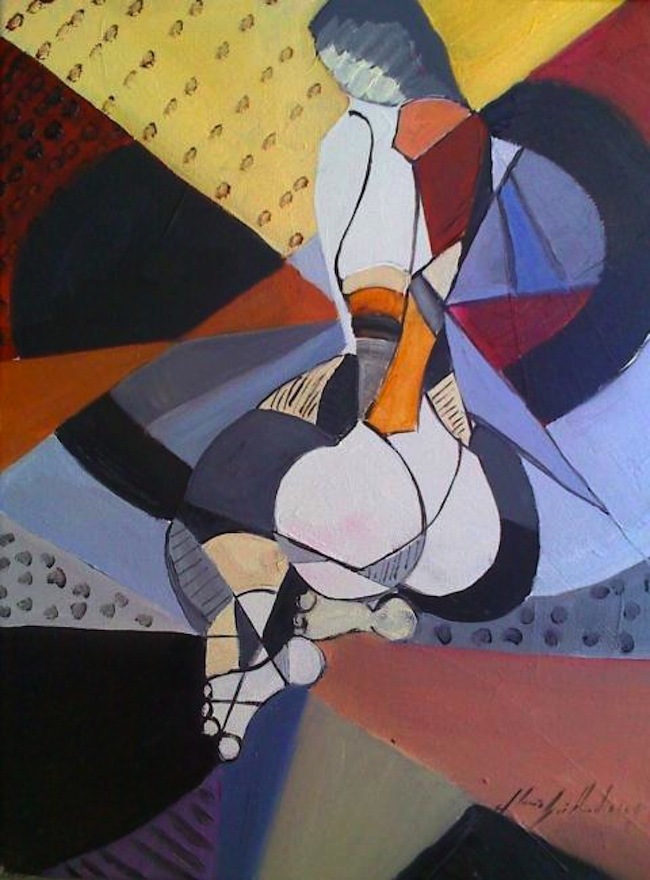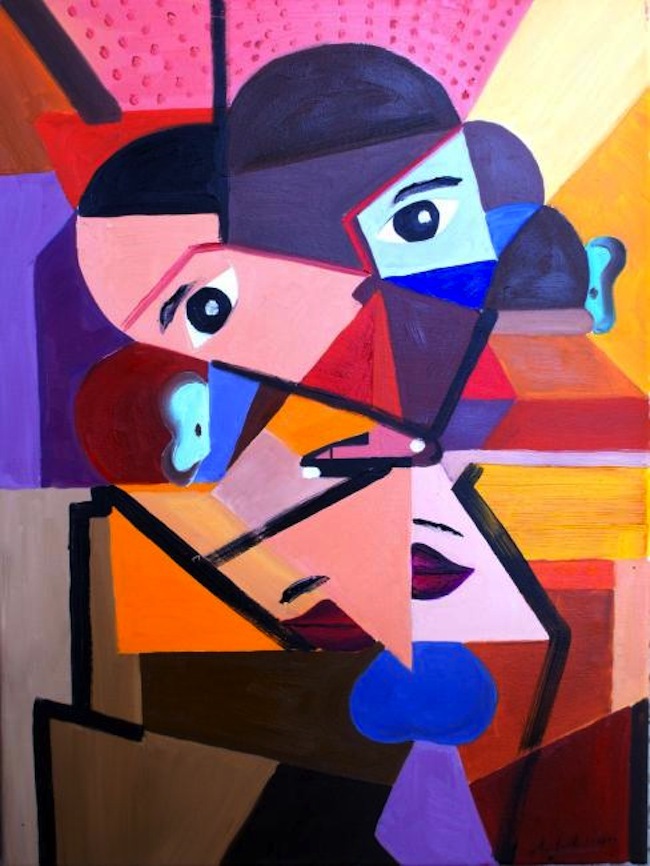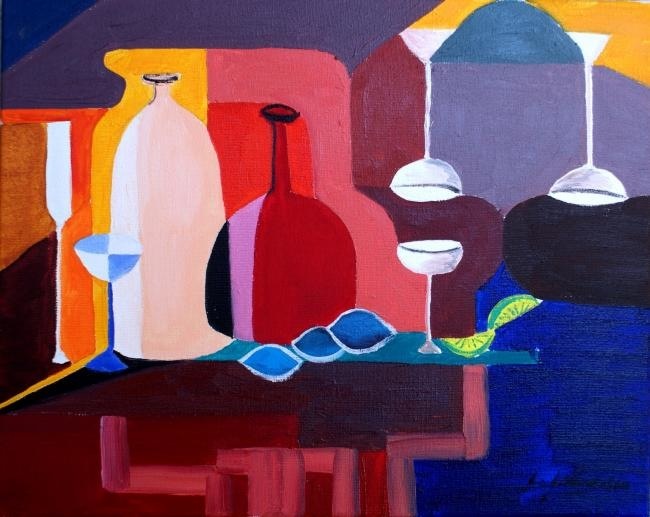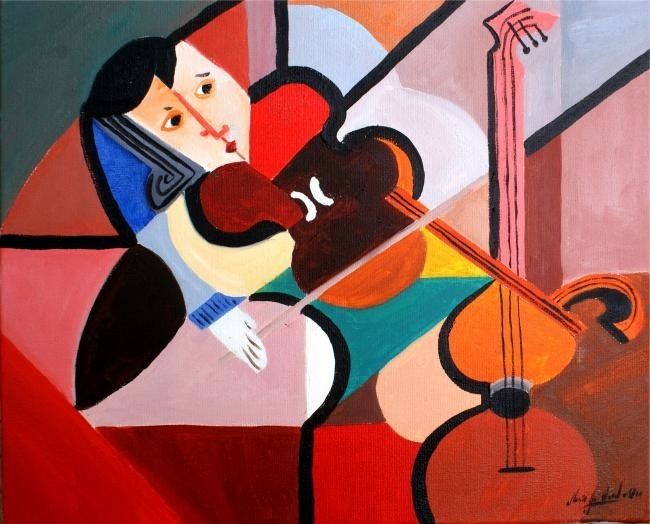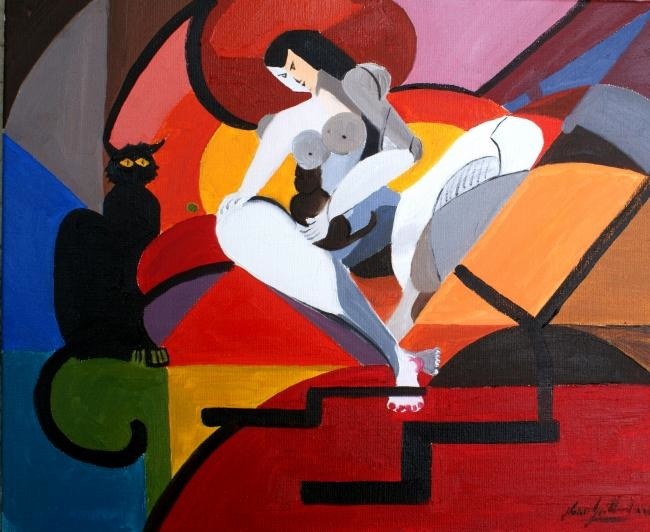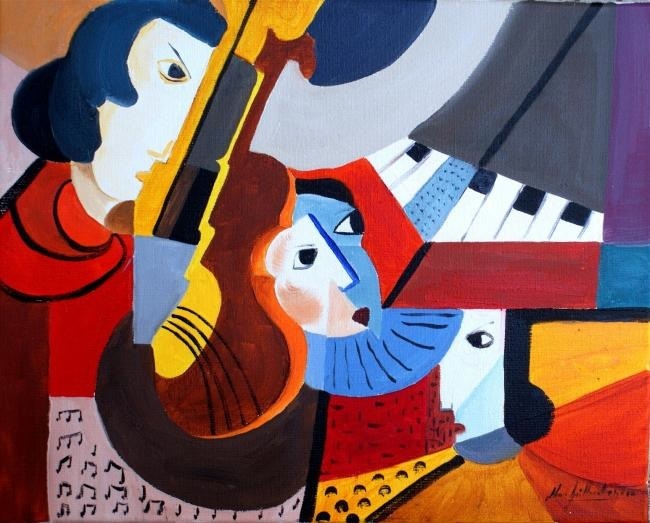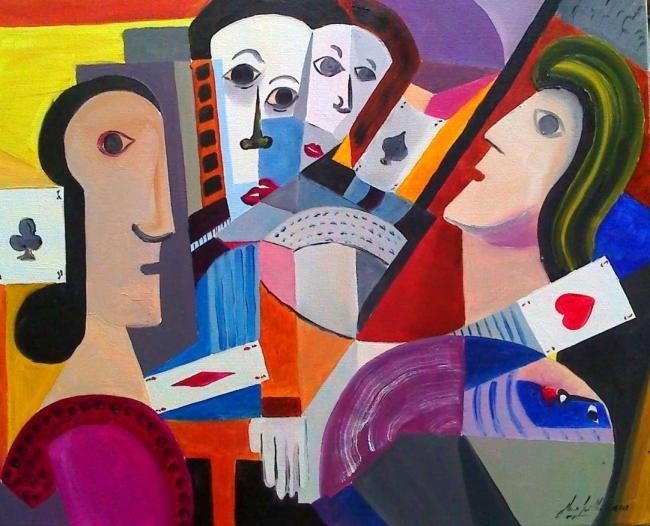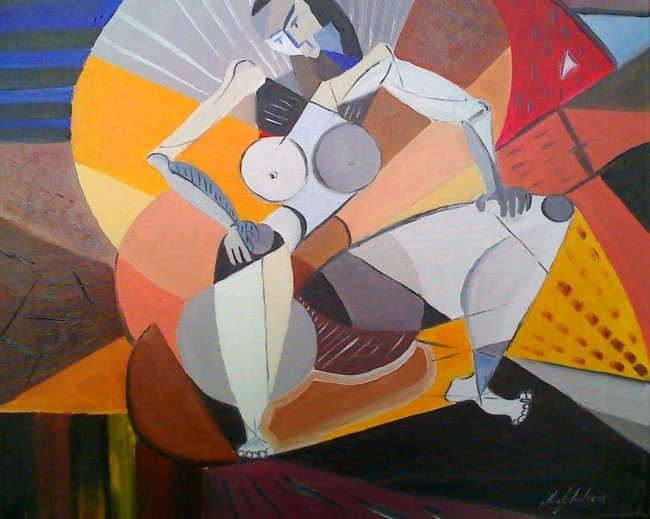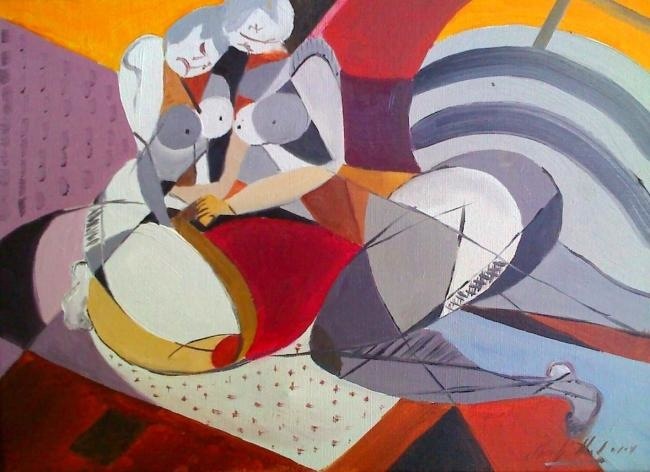Jean Luis is a wonderful painter who has sent me an email few days ago. This time I will not write anything…I will let him talk, since I believe he does it better than anybody.
MS
“As a retired general practitioner (born May 13th, 1956), I started my artistic career as a professional painter two years ago (2007). In my opinion, being a professional, has two meanings, being a registered tax payer and recognized by its peers. This doesn’t prejudge the produced work by “amateurs” and “professionals”. Their work is most of the time as interesting. I’ve always been drawing, selling my first painting at the age of 13, receiving for payment some candy from a high school supervisor; it hasn’t been my plastic art teachers encouraging me towards painting. Being in contact with a colleague doctor, a local water-colorist, I decided to launch myself, on sudden impulse, in 1997, into the pictorial adventure. Water coloring in the beginning, with its pastel shades and its rigor in drawing, admitting this medium, at that period in time, as bringing calmness and serenity to me after a hard working day. A few local collective exhibitions and a private exhibition (Congress Center of Bourges) confirmed my choice for painting.
A meeting in 2002 with J.C. Guignardeau (Sables d’Olonne) brought the revelation: I discovered acrylics. A simple medium, rapidly drying, perfectly convenient to my self-educated training as a water-colorist. Relating to my acrylic techniques: produce a painting at one time. Some collective and private exhibitions followed, but in 2007, I became discovered by one of the very famous Gard exhibition places: Saint Laurent des Arbres. 2008 presented the consecration in exhibiting one of my paintings at the Paris Autumn Fair, in 2009 a listing in the Mayer Guide book/ Art Price and beginning exhibitions in Paris galleries as well as abroad (Italy, Belgium).
Personally, I think that painting is a dialogue between human beings. Each word, each sentence can and must be written in overall languages in order to convey my emotions. Having invented and registered the painting patent for blind people – called emotional painting – associating each color to an emotion, I cannot believe in something else than the dialogue of colors expressed by the painter. The emotion in a painting derives from the fair balance among diverse emotions, even contradictory, expressed by colors. The colors I use (ink, watercolors, acrylic) and all styles applied, don’t have, neither of them, the same scope. The force of ink can be approached to the acrylic one, but the softness comes from watercolor.
Passion will be easily conveyed by means of the two first mediums, but poetry and serenity by the third one, for example. Styles, alike, imposes themselves on this or that vision of things. At least, for me. Certainly, the consistency of realization doesn’t meet with reality, it’s said. Granted. But color and joy, enthusiasm and gaiety are present. Here I introduce the notion, like in the medical field, of general painting opposite to specialized painters in such or such style … I compare very often my painting to music : the mediums would be the notes and the styles are the scopes, the themes, the symphonies : symphony of dance, of music, of ocean, of nude painting … my favorite themes.
Painting represents for me the spirit of life, a human being might cling to something concrete, when being in deepest desperation, and rediscover life through art or painting.
Therapy represents, for the one who practices, a way to transmit senses and emotions to the person contemplating the painting. One can get lost amidst colors and forms, perceive unknown landscapes, hidden emotions, inside the painter or oneself.
Colorist, above all, I strived to be a painter of joy. Pushing aside my principles while passing across my most difficult periods, I intended to transpire the resurrection, the hope each being can aspire to. Associate colors within forms, try to liberate or compel oneself to most pure lines, allows structuring the psyche of everyone, granting him consistency in space and time. I didn’t want to exhibit the standstill, the obscurantism, the monopoly of sadness: the spectators know this, they live it, they aspire something else. I always kept a figurative thread in my paintings, a benchmark with the real, in order to not get lost myself, so that probably the others don’t get lost either. The line invites to a journey, giving the direction, stressing out the curve of anatomy. Color grants power. The knife sometimes creates movements. Always surprise oneself: here is the master word. Far from wishing to astonish others, I take the liberty of astonishing myself again and again. That’s the basis of creation for me. Create atmospheres, not to focus at any cost on reproducing in extenso reality, even expressed by symbolism.
In absence of a thinking framework, I oscillate among all styles following my moods, the temper of my passions. Alike a symphony, painting needs several instruments. Each medium has its own value, its tempo. Water coloring, acrylics, charcoal or ink, declined in expressionism, figurative, cubism or abstract, deliver a complexity to my painting work requiring the reading of signature in order to be recognized. To express oneself is positive, but one needs to dialogue apart from one’s own home. Data processing information keeps me aware of national and international exhibitions that are taking place. Thus, I do a selection of those pleasing me with reference to their international consideration, eventual future results and touristic aspects.
Being a pensioner, I have the chance to not need to sell for my living: I can thus express myself freely with my painting, without paying attention to the commercial aspects of it. To paint freely, without thinking framework: a double perfection to my taste.
Now, ending the second year of my professional career, I feel the need to join artist associations evolving within the same thinking streams as me: “Artisti sensa Frontiere” and “Mécèn’Arts” seems symbolize this state of mind to me. This way, I will feel less isolated and have the glance of others on my work. Exhibition organizers accept or refuse, indeed, admission requests without giving any explanation. This seems less destabilizing to me now. Even not selling painting during exhibitions (in galleries or elsewhere) does not permit to judge the artistic quality of my work. Is it the non homogeneity of work? selling rates? size of paintings? theme of exhibition? Quantity of questions are rushing up before and after an exhibition. I am reaching a point where I need benchmarks, a master would be welcome, a master to guide and orient me.
If I want to reach the goal I am striving for – be present in the most famous museums – I need to take that way and produce a social painting, so that lots of people will be able to meet and to gather and art will no longer be a privilege of an elite criticized only by “critics”. Artists pursue, critics disappear without leaving a souvenir. “Vox Populi, vox dei”, the universal painting.”
Jean Luis Gaillard
